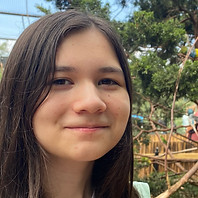Editorial Philosophy
In the service of our Mission and Beliefs, we ask our editors to adopt the Polyphony Lit philosophy, which aims to be both encouraging and constructive to emerging writers. We ask our editors to:
-
Believe each writer's words are valuable.
-
Be committed to one aim: helping the author write the best poem, story, or essay they can write.
-
Avoid a cookie-cutter approach to reading for acquisition (editing with an eye toward publication). Our student editors hail from all over the world and represent a variety of cultures and literary tastes which help us create a magazine that we hope will be reflective of the world at large.
-
Give clear and specific feedback about a work's strengths and areas for improvement.
-
Strive to find successes buried in the work of all writers, regardless of their level of experience.
-
Constantly work to acquire more knowledge of literary devices, narrative elements, and poetry forms, which are tools to skillfully encourage richness and clarity.
-
Learn to recognize devices and techniques that make good writing.


Editorial Process
The Polyphony Lit Editorial Staff, comprised of volunteer high school students from all over the world, provides editorial feedback to every submission, excluding seasonal contest entries, and decides which pieces are accepted for publication in our triannual online and print publications. Each piece is read and commented on by two Junior Editors and one Senior Editor. The final decision on publication is made by an Executive Editor, Genre-Managing Editor, or Editor-in-Chief. At the conclusion of the editing cycle, editorial comments are compiled and sent directly to the submitter. Since we seek to provide editorial training for young writers, our editors also receive feedback on their commentary from other editors.
Response time may vary, depending on the size and availability of our volunteer staff, but we are always searching for ways to streamline the process.
Meet
Our Team
Staff
David Galloway
Diretor-executivo
Julian Riccobon
Diretor-gerente
Shawn Waterman
Gerente de Operações
Anshi Purohit
Social Media Manager
Chelsea Zhu
Assistant Manager
Ava Chen
Teaching Assistant
Nina Ballerstedt
Teaching Assistant
Sosena Audain
Teaching Assistant
Selina Zha
Teaching Assistant
Natalia Arruda
Teaching Assistant
Emilie Guan
Teaching Assistant
Vaidehi Ghotkar
Teaching Assistant
Conselho de Administração
Fundador
Capa e arte do site
As colagens de desenhos de Tony Fitzpatrick, artista, poeta e ator, enfeitaram as capas da Polyphony HS por nove anos e são destaque em todo o nosso site. Tony Fitzpatrick é um artista de Chicago mais conhecido por suas colagens multimídia, gravuras, pinturas e desenhos. O trabalho de Fitzpatrick é inspirado na cultura de rua de Chicago, cidades para as quais viajou, livros infantis, desenhos de tatuagem e arte popular. Fitzpatrick é autor ou ilustrador de oito livros de arte e poesia e, nos últimos dois anos, escreveu uma coluna para oNova cidade.A arte de Fitzpatrick aparece no Museu de Arte Moderna de Nova York, no Museu de Arte Contemporânea de Chicago e no Museu Nacional de Arte Americana em Washington, DC. O álbum Yellow Moon dos Neville Brothers e os álbuns El Corazon e The Revolution Starts Now de Steve Earle também apresentam a arte de Fitzpatrick. Em 1992, Fitzpatrick abriu um estúdio de gravura com sede em Chicago, Big Cat Press, que existe hoje como o espaço de exposição de artistas Firecats Projects. Antes de ganhar a vida como artista, Fitzpatrick trabalhou como apresentador de rádio, barman, boxeador, pedreiro e ator de cinema e teatro. Para saber mais, visite www.tonyfitzpatrick.com
Estudantes estagiários
Somos uma organização gerida por estudantes. Além do trabalho editorial, os estagiários trabalham em web design, tarefas de back-office, marketing e mídia social, planejamento de eventos e muito mais. As inscrições para estágios de verão serão abertas em abril.


About Us Page Art by Julian Riccobon, Yuchen Shi, Maggie Yang, Faith Zhang, Cecilia Yang, Austin Liu, and Tony Fitzpatrick.
"Strangling Blue" by Maggie Yang was previously published in The Adroit Journal, Issue 42.



























